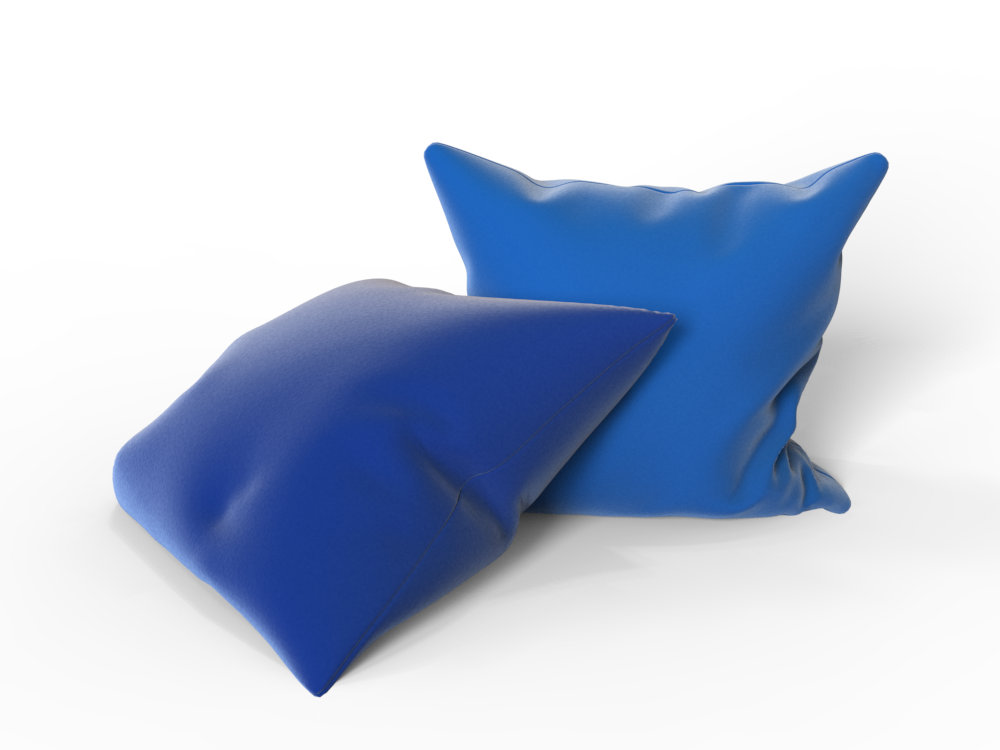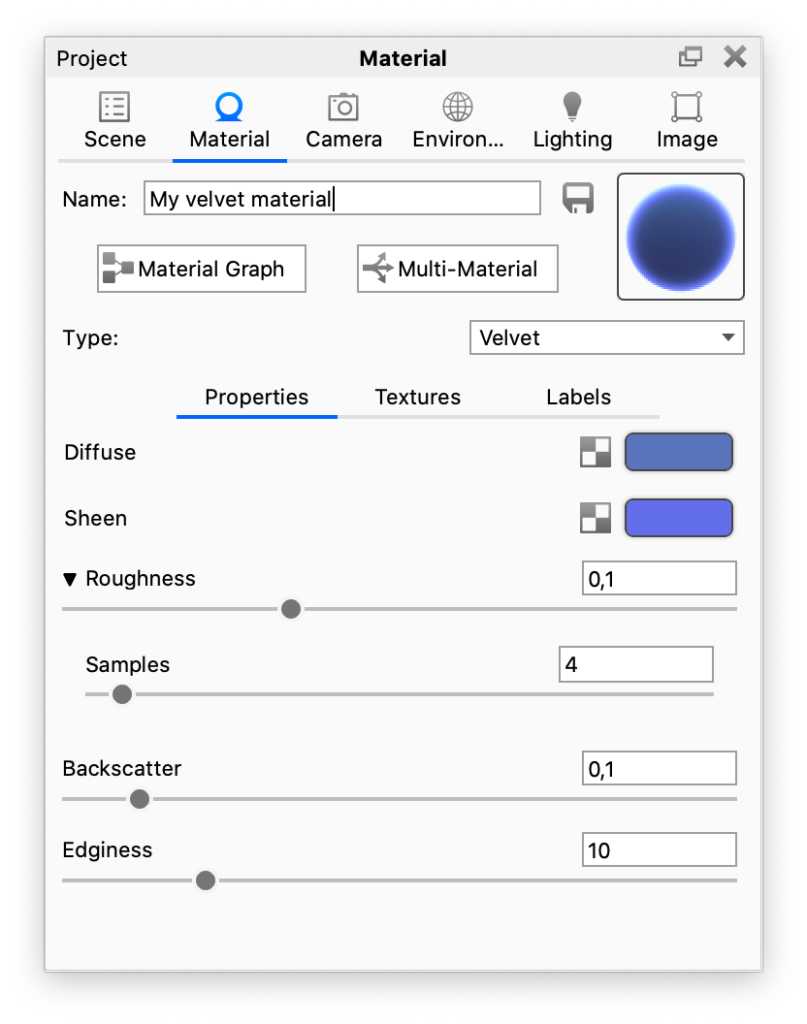On this page

The Velvet material is very useful for creating soft fabrics that have the distinct light catching effects that result from the soft fibers in finely woven fabrics.
You will generally be able to do fabric materials well with the RealCloth, Plastic or Advanced material types – but the velvet material provides control over parameters not found in other material types.
Diffuse
This can be thought of as the overall color of the material. A dark color is generally preferred for both the diffuse and sheen settings as this material can become unnaturally bright when light colors are used.
Sheen
The sheen color is observed as light that appears to be reflected back across the surface from behind, almost as though the surface is backlit. This setting is combined with the edginess control to add a soft sheen across the entire material. The backscatter parameter also gets its color from the sheen setting. Generally, this should be set to a color very similar to the diffuse color, but a bit brighter.
Roughness
The roughness setting determines how evenly the backscatter effect is distributed across the surface. When this is set to a low value, the backscattered light will stay contained within smaller areas. A high value will spread the light across the entire object evenly.

Backscatter
This is light that is scattered across the entire object and is especially apparent in the shadowed areas of the object. It can be used to give an overall soft look to the surface. The color of the backscatter light is set with the sheen control.
Edginess
This controls how far the sheen effect spreads over the surface. A low value will cause the sheen to fade out gradually, while a high value will produce a bright border of sheen around the edges of the surface. A setting of zero disables the sheen effect.
Samples
The samples setting controls how imperfect or refined the backscatter effect appears. A higher value will smooth out this scattered light and will cause it to appear more even. A low value will show a coarser grain/noisiness in the backscattered light. A higher setting, around 32, is often preferred for this setting as it provides a smoother result.